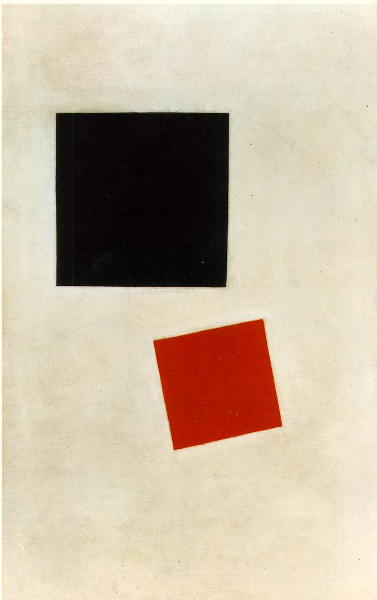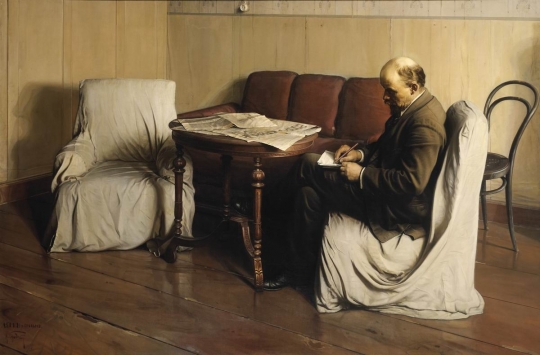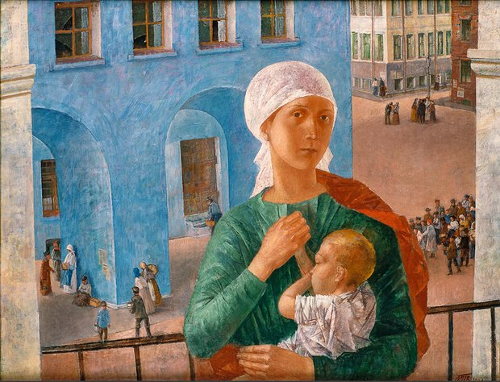
Slow to write this down, but I think it is worth a short report.
The Revolution: Russian Art 1917–1932 show at the Royal Academy is very well put together and includes ceramics, print, film, photography and textiles as well as painting. It covers the style of art that first started to appear during the turmoil of the Bolshevik coup, and the early years of the revolution. Much propaganda of course, but also some real, "pure" art that passed by the watchful government eye unmolested. At least for a time.
A lot of artists here were new to me. The most famous one I knew being Kazimir Malevich, an abstract artist well known for his stark, geometric and flat coloured objects. Other unfamiliar artists I liked included Isaak Brodsky, a much more traditional painter, and Kuzma Petrov-Vodkin. Petrov-Vodkin had a whole room devoted to his work, the first time so much has been seen outside Russia. He started off painting religious icons and there is a vague hint of this in later work: a brightness of colour, and magical undertone. Very interesting artist.

Kasimir Malevich - Black Square and Red Square, 1915.

Isaak Brodsky – V. I. Lenin in Smolny, 1930

Kuzma Petrov-Vodkin - Petrograd Madonna, 1920
There were lots of bad times over the course of the years here: war, famine and genocide. At the end of the show is a small memorial film of some of the victims of the terror: mugshots taken before their murder or deportation to the gulag. Like everyone else, artists were not free to express themselves in the Soviet Union and the initial flowering of creativity eventually dried up, like much else.
The RA have put on an excellent exhibition however.



